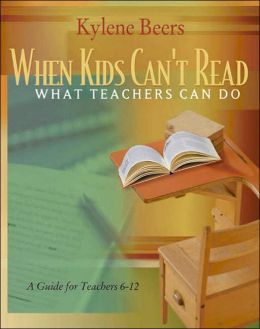 I have been fortunate (or unfortunate, depending on your viewpoint) to be involved in numerous programs and committees in my district that keep me informed about district and school strengths and weaknesses. I am the lead for my school literacy initiative and our ESL program and also work with these programs at the district level. I am part of my school leadership team, a group that works to set instructional and student goals. This year, I was invited to participate in a district committee that looks at district and school data. The point of this brief resume is to show that I am fully aware of my district and school needs, and within the past few weeks, a great deal has come to light in a new way. I have had to shift gears in regard to how I teach and how I model my instruction.
I have been fortunate (or unfortunate, depending on your viewpoint) to be involved in numerous programs and committees in my district that keep me informed about district and school strengths and weaknesses. I am the lead for my school literacy initiative and our ESL program and also work with these programs at the district level. I am part of my school leadership team, a group that works to set instructional and student goals. This year, I was invited to participate in a district committee that looks at district and school data. The point of this brief resume is to show that I am fully aware of my district and school needs, and within the past few weeks, a great deal has come to light in a new way. I have had to shift gears in regard to how I teach and how I model my instruction. Our eighth-grade English curriculum has focused heavily on reading and less on writing for the past few years. As we (the teachers) become more educated in how to understand and use student data, we have started to balance more writing into our instruction. I feel like teaching writing is much more my area of expertise than reading will ever be, but with limited time for writing instruction, I have to admit that I have truly glossed over the writing process for the past few years.
For the past couple of weeks, my students have been working on an essay about teens cheating on schoolwork (see NY Times writing springboard). I had my kids using a generic expository graphic organizer to create an opening sentence (thesis) with three reasons for their viewpoint and three supporting details per reason. I chose an organizer that I have used in prior ESL training to best meet the needs of my student population. I created my own example and modeled how to create each part.
While this was occurring in my classroom, I had a meeting with my principal and instructional coaches. We were having a conversation about what is missing in teacher instruction and came to the conclusion that teachers are modeling, but we are not modeling our thinking and metacognitive strategies effectively. Teachers show how to do something, but we are not necessarily conducting a thorough think-aloud to show the students the thinking process and inquiry involved in the work being done.
Shortly after that meeting, I had an expository writing workshop to attend that provided some new strategies that I immediately brought to class and applied with more thorough instruction and modeling of my thinking. Here is what changed:
- I had my students analyze the reasons and supporting details that they created to determine if they had facts, personal experiences, and/or references (this piece was presented to us for planning, but I was already on the flip side of that). The kids also decided that we needed to identify commonplace assertions. I conducted a think-aloud, deliberately asking questions of myself and expressing the steps I took in sorting through my own ideas. Although it was not a thoroughly planned think-aloud, I do feel like I made progress in making my invisible thinking visible.
- References were new to my students, and this provided them with an option for making revisions after discovering they had too many facts and personal experiences. Students who lacked personal experiences suddenly had more information to include in their writing.
- We used a four-question technique to determine what information needed to be included in our paragraphs. Without this, students were simply copying over their reasons and supporting details without any additional thought. I again conducted a think-aloud on how to answer these questions to build a paragraph, rather than just modeling my writing.
- What point am I trying to make?
- What details support my point?
- How can I show this? or Why is this important?
- How do these ideas connect back to my thesis?
- Another step with the questions was to color code our work to show the thought process. For each question answered within the paragraph, students had to use a different color to ensure that they were actually including all necessary information.
 I still feel like I have a long way to go to provide writing instruction of the quality that I used to when teaching it independently, and working in more focused and specific think-alouds is definitely challenging (and you will hear more about it as I read through Jeffery Wilhelm's Improving Comprehension with Think Aloud Strategies). As adults, it is amazing that we know as much as we know, and it is not very easy to verbalize all of that in order to help students learn how to think on their own.
I still feel like I have a long way to go to provide writing instruction of the quality that I used to when teaching it independently, and working in more focused and specific think-alouds is definitely challenging (and you will hear more about it as I read through Jeffery Wilhelm's Improving Comprehension with Think Aloud Strategies). As adults, it is amazing that we know as much as we know, and it is not very easy to verbalize all of that in order to help students learn how to think on their own. 











































